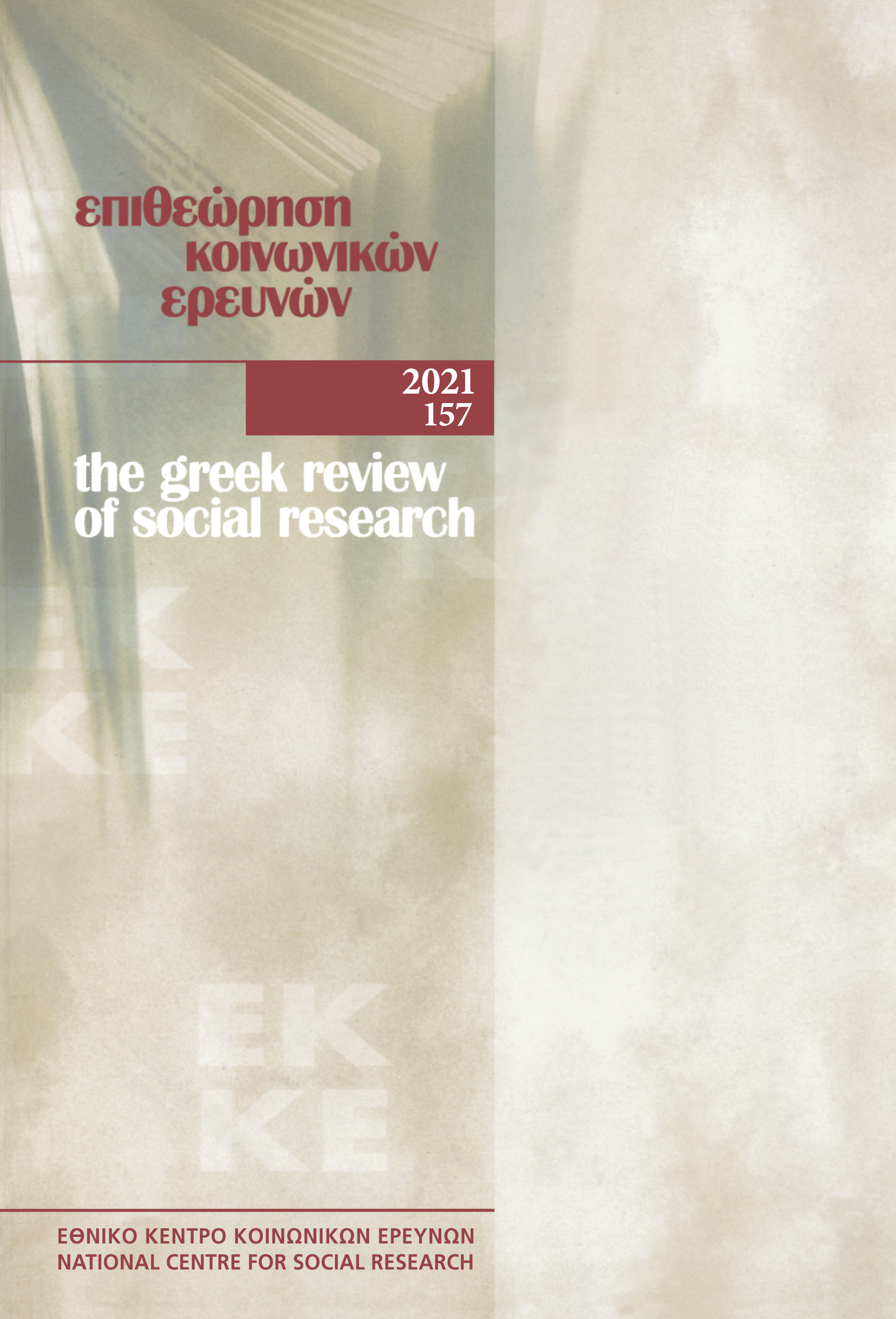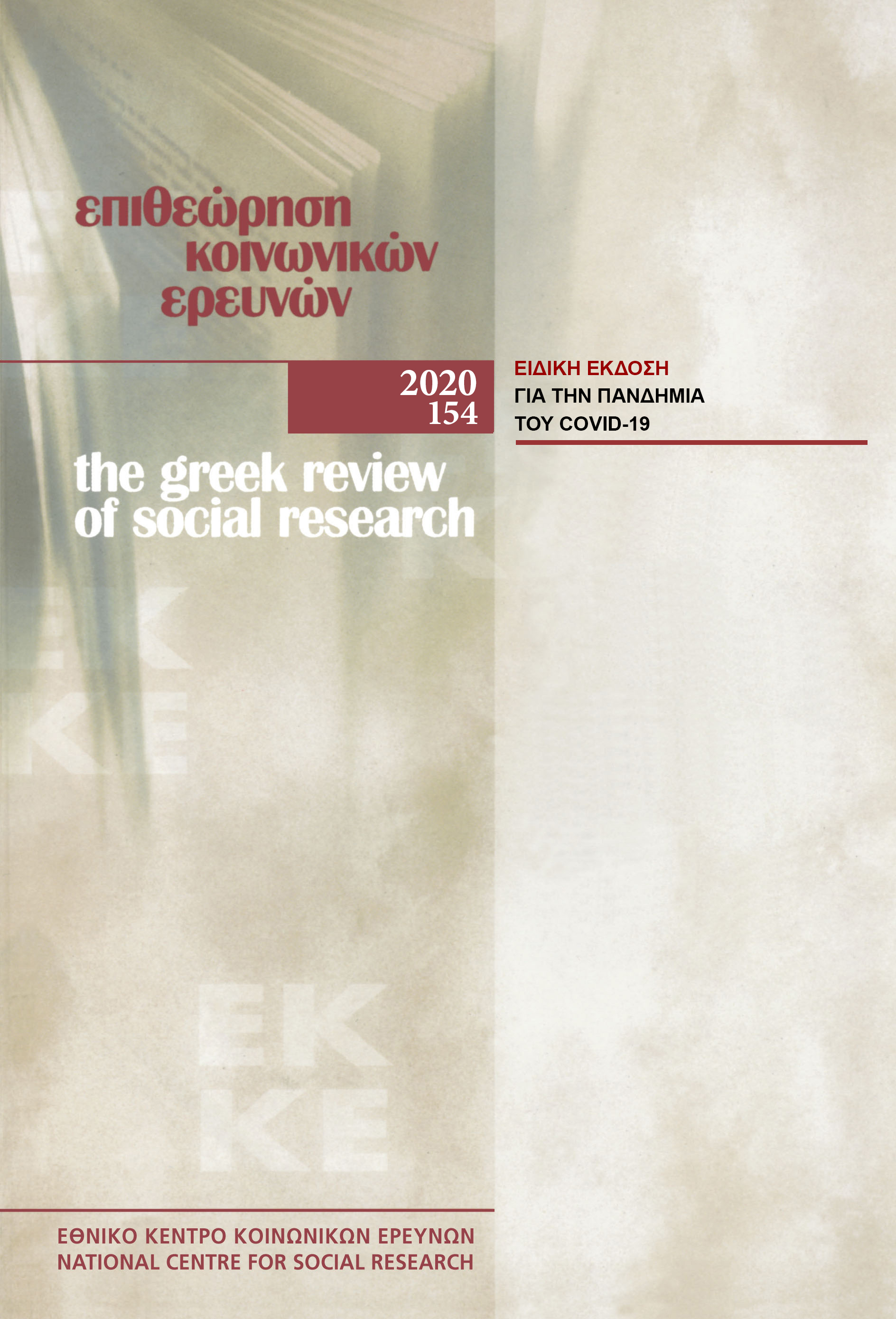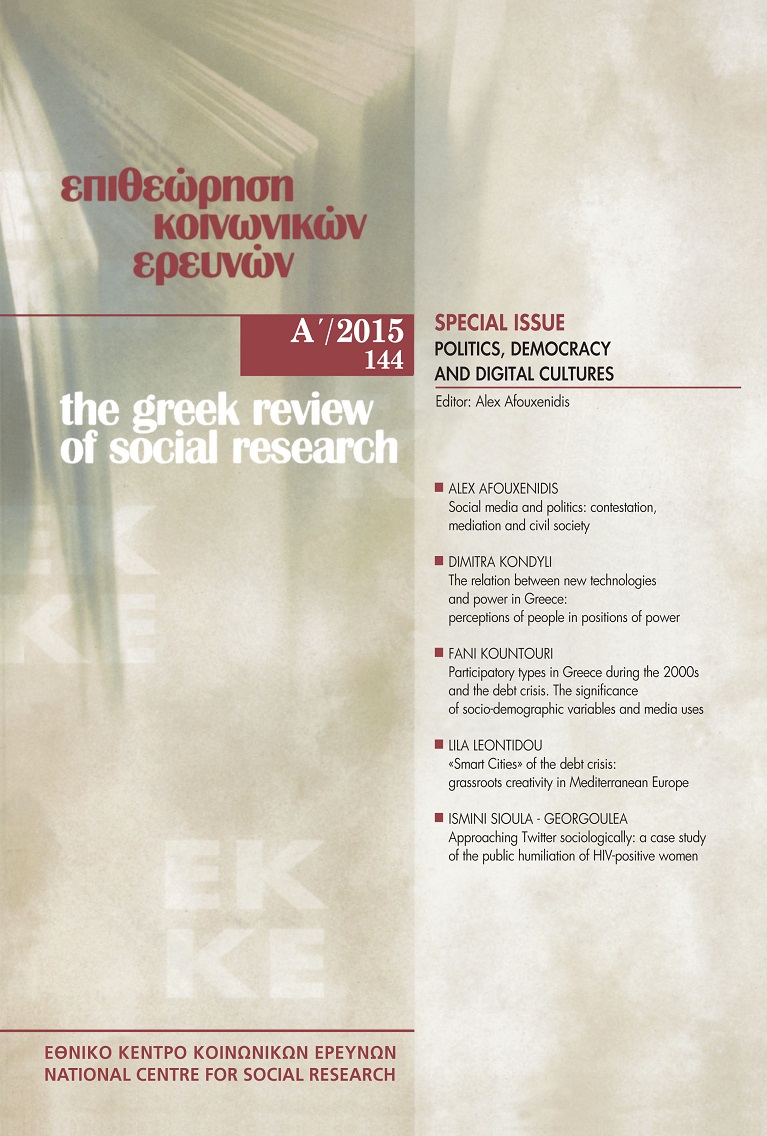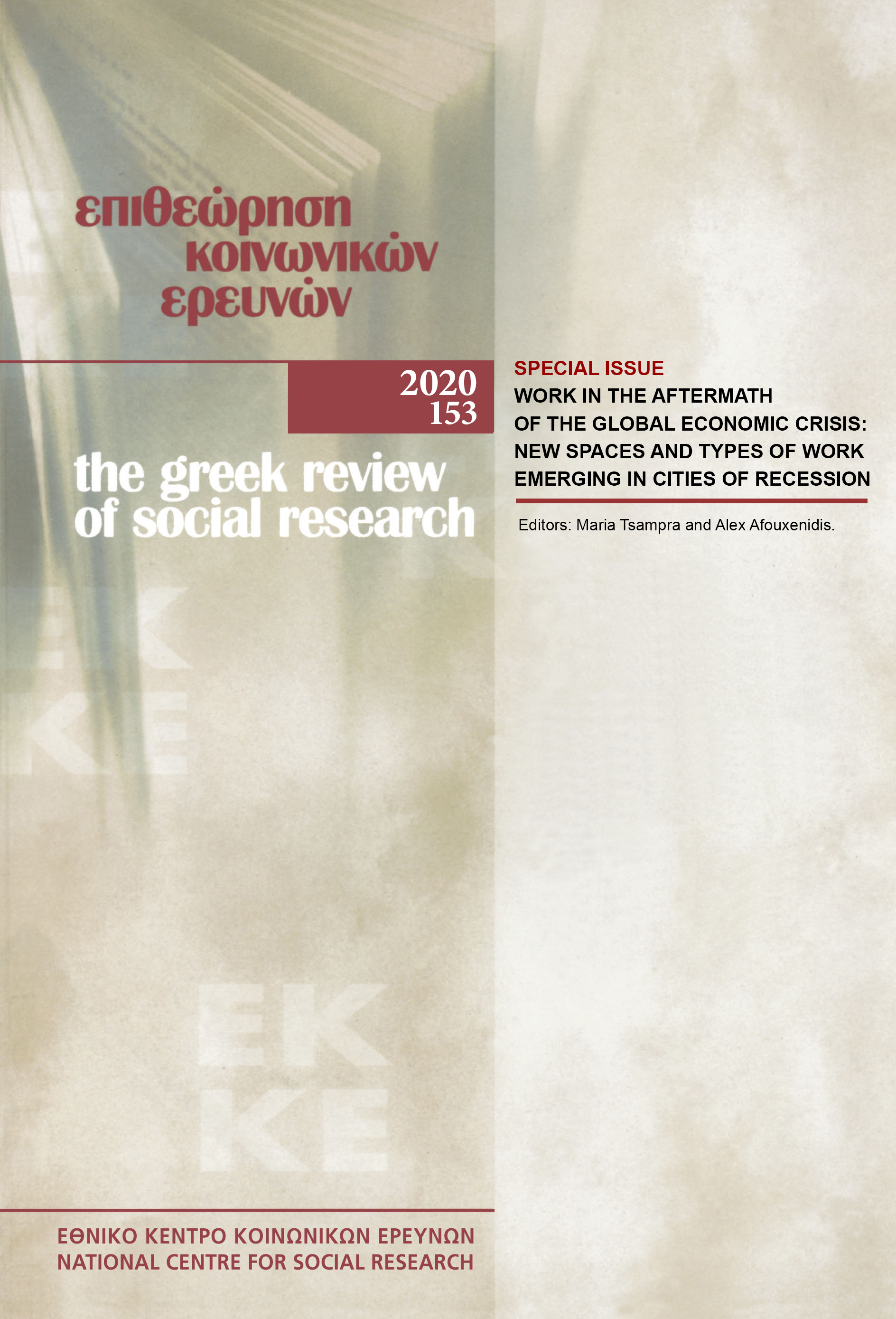Άκρα δεξιά και ψηφιακά μέσα: αισθητική, ακτιβισμός και λογοθετικά σχήματα

Περίληψη
Αυτό το κείμενο παρουσιάζει τη σχέση της άκρας δεξιάς με τα ψηφιακά μέσα στην Ευρώπη και τις ΗΠΑ. Το άρθρο αποτελεί σύνθεση βασικών θέσεων της βιβλιογραφίας που εξετάζει αυτήν τη σχέση και ορισμένων ερευνητικών παρατηρήσεών που αφορούν στην ελληνική συνθήκη. Παρόλο που συγκεκριμένες ρητορικές της άκρας δεξιάς για ζητήματα όπως το έθνος, η φυλή, το φύλο και η σεξουαλικότητα δεν αποτελούν κάτι νέο, έγιναν αντικείμενο επικοινωνίας με νέους τρόπους και μέσα. Οι ψηφιακές τεχνολογίες δεν παρείχαν απλώς δυνατότητες συνάρθρωσης ακροδεξιών δικτύων και δημοσιοποίησης του μηνύματός τους σε μεγαλύτερα ακροατήρια αλλά συνέβαλαν στη διεθνοποίηση των θέσεων της άκρας δεξιάς και κατέστησαν περισσότερο δημοφιλές το μήνυμά της, με αποτέλεσμα να συγκροτηθεί ένα αντισυστημικό προφίλ με σημαντικό αντίκτυπο στην ακτιβιστική δράση σε δημόσιους χώρους.
Λεπτομέρειες άρθρου
- Πώς να δημιουργήσετε Αναφορές
-
Afouxenidis, A., & Petridis, P. (2021). Άκρα δεξιά και ψηφιακά μέσα: αισθητική, ακτιβισμός και λογοθετικά σχήματα. Επιθεώρηση Κοινωνικών Ερευνών, 157, 1–30. https://doi.org/10.12681/grsr.27599
- Τεύχος
- 2021: 157
- Ενότητα
- Άρθρα

Αυτή η εργασία είναι αδειοδοτημένη υπό το CC Αναφορά Δημιουργού – Μη Εμπορική Χρήση 4.0.
Οι συγγραφείς των άρθρων που δημοσιεύονται στην Επιθεώρηση Κοινωνικών Ερευνών διατηρούν τα δικαιώματα πνευματικής ιδιοκτησίας επί των άρθρων τους, δίνοντας στο περιοδικό το δικαίωμα της πρώτης δημοσίευσης. Άρθρα που δημοσιεύονται στην Επιθεώρηση Κοινωνικών Ερευνών διατίθενται με άδεια Creative Commons 4.0 και σύμφωνα με την άδεια μπορούν να χρησιμοποιούνται ελεύθερα, με αναφορά στο/στη συγγραφέα και στην πρώτη δημοσίευση για μη κερδοσκοπικούς σκοπούς.
Το Εθνικό Κέντρο Κοινωνικών Ερευνών διατηρεί το δικαίωμα να δημοσιεύει, να αναπαραγάγει, να παρουσιάζει στο κοινό, να διανέμει και χρησιμοποιεί άρθρα που δημοσιεύονται στην Επιθεώρηση Κοινωνικών Ερευνών σε οποιοδήποτε μέσο και μορφή είτε μεμονωμένα είτε ως μέρη συλλογικών έργων, για όλο τον χρόνο διάρκειας προστασίας της πνευματικής ιδιοκτησίας και για όλες τις χώρες του κόσμου. Αυτό περιλαμβάνει ενδεικτικά και όχι αποκλειστικά το δικαίωμα δημοσίευσης των άρθρων σε τεύχη της Επιθεώρησης Κοινωνικών Ερευνών, αναπαραγωγής και διανομής μεμονωμένων αντιγράφων των άρθρων, αναπαραγωγής ολόκληρων των άρθρων σε άλλη έκδοση του Εθνικού Κέντρου Κοινωνικών Ερευνών, καθώς και αναπαραγωγής και διανομής των άρθρων ή περίληψης αυτών με χρήση πληροφορικού συστήματος αποθετηρίου.







